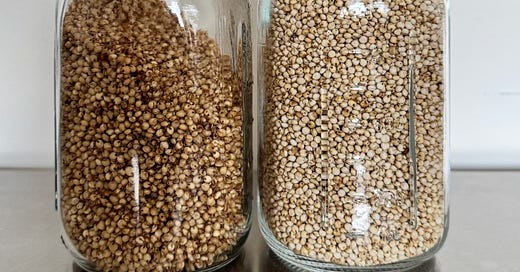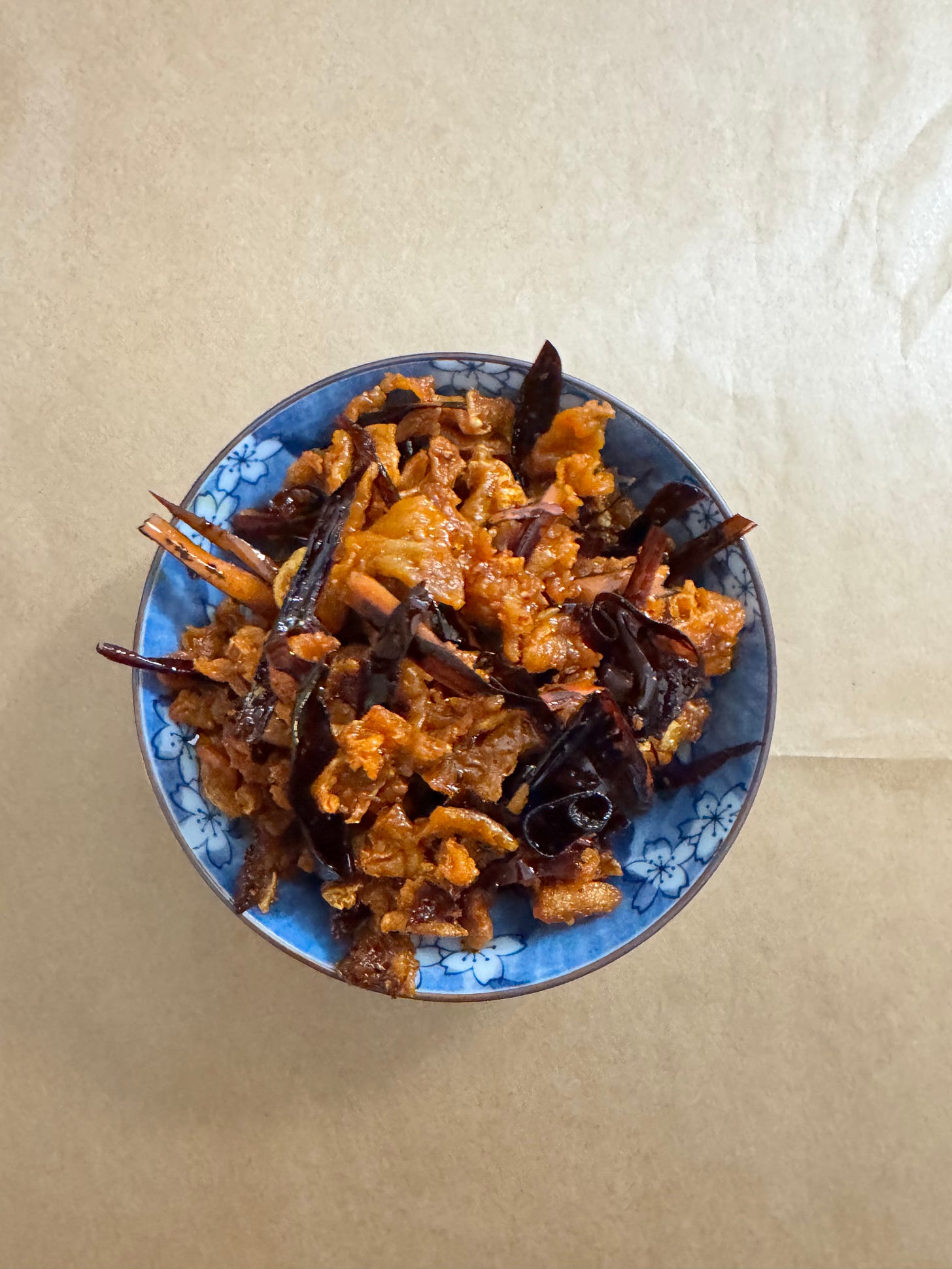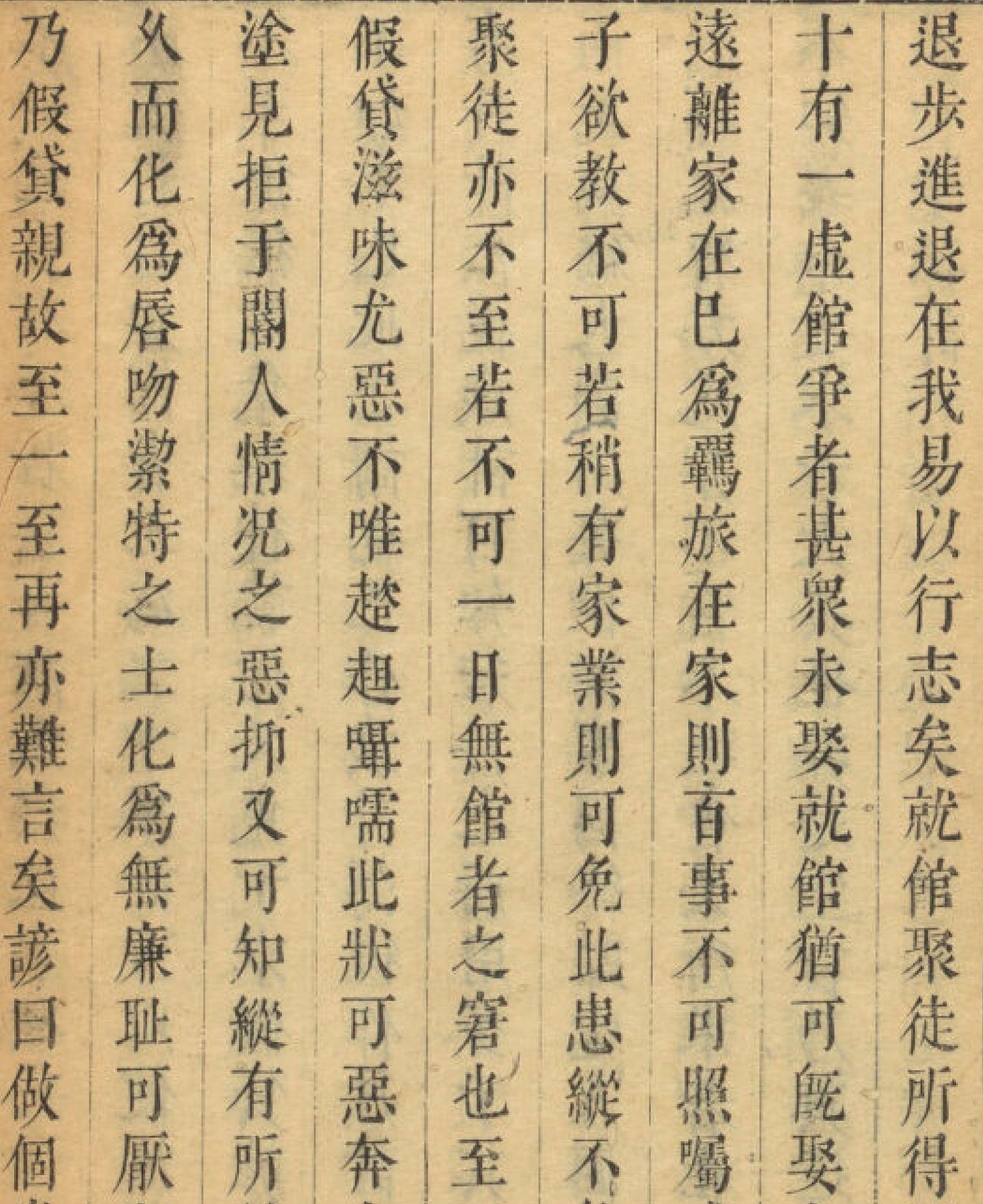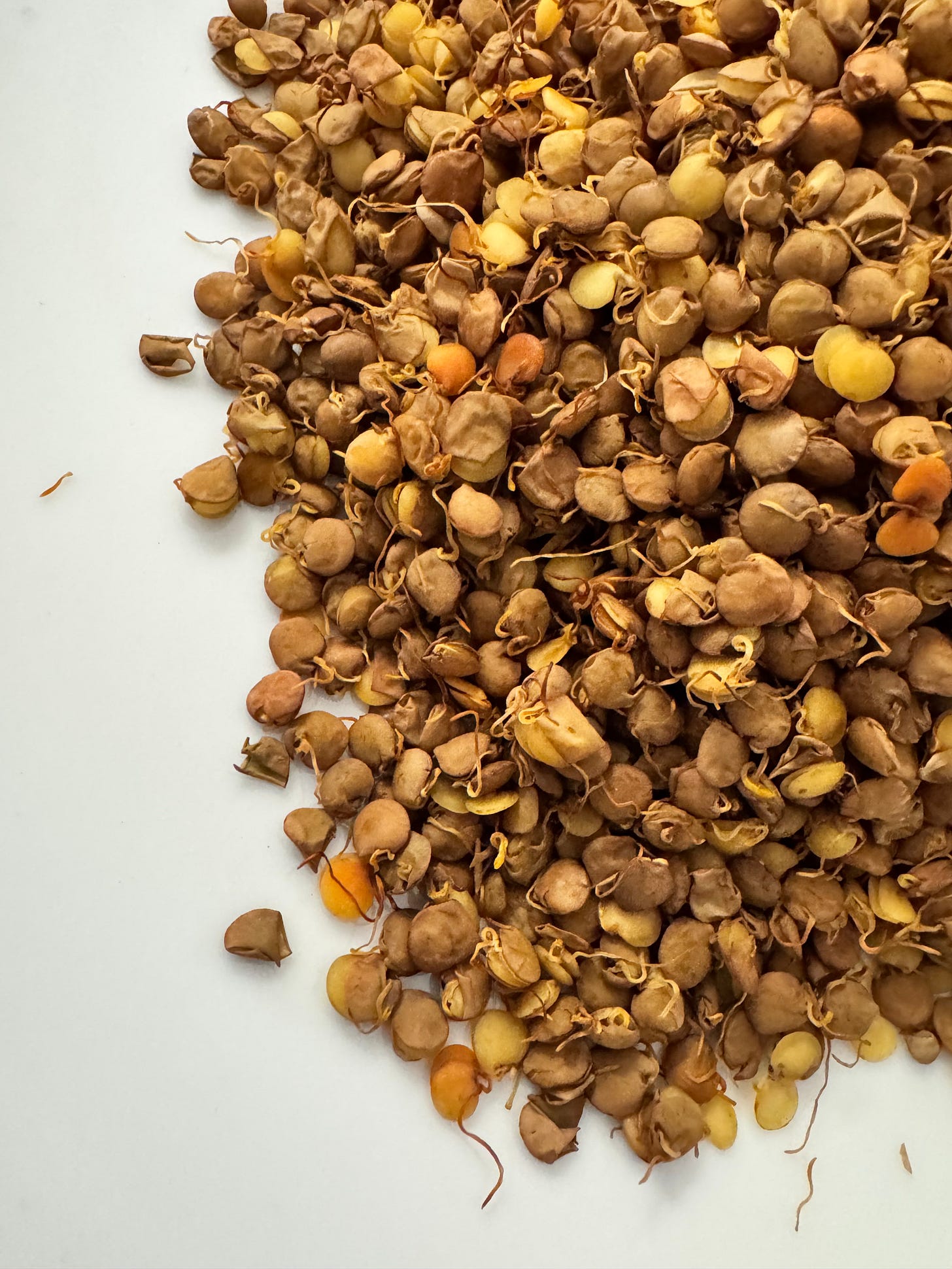Malted Sorghum and Roasted Sorghum for Flour
Typically, I would caution people using any type of microbe to ferment, or inoculate to then ferment with any metabolites created, to stay away from animal fat.
Not so much out of safety concerns - although you have to use the appropriate amount of salt properly, and typically pre-treat by drying or possibly curing anything that is a mix of meat and fat - but because the mouth feel can be awful. Greasy and very unpleasant.
Duck Skin Chili Crisp for Jiang
The above photo is of a chili crisp I made. It’s an unusual take, but one know well. Minus the use of a shio-koji marinade for the chicken, or duck skin (usually), that was fried with the hot pepper strips until both were very crispy. It’s quite salty. It was never used as a condiment.
It was typically pounded into a jiang (or Chinese style soybean paste) that very much resembled what most people know as Japanese style miso.
It was always made with dried Italian fava beans, though, because that’s what was always available.
A single species or mono-species koji of Aspergillus was not involved. That’s a point you will read about again and again - and watch as well in 2025 and beyond.
The use of a koji monoculture may be a common thing in the fermentation world, but it is a very recent phenomenom in the tens of thousands of years that we know that preparations using filamentous fungus have been used, and shared by the Chinese with other countries throughout the world.
To make the shio koji for this chili crisp I used fermented sorghum sourdough water - yes, I will get to how the Chinese invented bread, malt sugar, candy, noodles, soy sauce, fish sauce, and the precursor to miso soon - and sorghum cooked and inoculated then processed like the Japanese at one point made their sakadane style bread.
Yet another Chinese technique that was very rarely made using rice or even wheat. I’ll get into the pre-cursors of, as well and modern tecnhniques of noodle, pasta, gluten, bread, dumpling and even porridge making as well.
Sakadane style bread making - next week’s posts - is not a dying practice, it’s just considered an outdated and inefficient process.
There are readily available yeast and enzyme mixes that save time and ensure consistency. At one point no had access to the monocultured spores we call koji tane. They had to harvest it themselves. Koji spore makers created a market, and a nostalgia for ways to do things that connected people culturally to their heritage.
But will that ever be supported enough by consumers to save the wheat reapers? People say they like a lot of things. They often do not buy them, or financially suport the people doing them.
Apocalypse Now
As we go through 2025, the year of fermented grains, you are going to get a heavy dose of how what we know from Chinese scrolls from thousands of years ago is still applicable and relevant today. We have strayed so very far from the ways that the planet, and the microbes that control it, we once followed.
And the results have been apocalyptic.
Modern ways to address issues, similar to how the domestication of huge numbers of animals solely for dairying, and farming solely to create huge fields of a specific grain, have created this nightmare.
Was any single human ever supposed to donesticate large numbers of animals, or did the societal wealth and power that came from doing such a thing justify ignoring the ethical obligation to treat the planet with reverence and ensure all creatures had access to food?
Throw koji at it? That won’t stop huge amounts of food being wasted, or destroyed by governments or producers that don’t care about hunger. They care about maintaining the price of their product.
Throwing chemicals or extracts at a problem, like using koji to preserve or enchance or make food safe, will never address the root cause : Nationalism and greed.
Microbes have always been used to preserve food. Sometimes to cook or process food to an edible state. Their job has always been to survive. They eat stuff, often stuff that we can’t begin to process or metabolize, and facilitate the recycling of organic and sometimes inorganic matter for their own means.
We think we’ve domessticated koji and other microbes, and can almost harness them to our will. Even to clean up our messes.
But you’ll never get good wheat or any grain or vegetable froma filed that has been contaminated just by throwing koji at it, just as eating something with koji in it will never clean up an intestinal microbiome that was messed up by intake of things you were never meant to eat - or that you were not able to metabolize.
Now What?
It first started out as sprouting seeds or grasses and things to make malts, or using chewing to produce enzymes to break things down in grains - especialy carbohydrates - to make them accessible and edible.
But there was someone that was always expected to do these things. To gather or hunt or grow. Or harvest the grains for malt or dumplings or porridge or bread.
Even in the ancient texts that outlined everything we think we discovered about a biome created exclusively by koji or Aspergillus - a condition that just does not, and has never existed before or possibly since human intervention) - there is some appointed commissioner or bureaucrat who feels shame about how the system works.
Thousands of years ago.
None of the issues we face today are new. What’s new are generations of people that think they just discovered a problem, and the possible solution to fix it. For profit, more than out of reverence, or even regard for nature.
The problem is that the issues we face have a very powerful armamentarium of weapons to prevent their resolution. And an enslaved population forced to survive by any means necessary, afraid to cause rippples that might effect them or their futures.
The solution is working together, in union, not as nationalists or populists.
Fermentations and Food Science
I’m not sure exactly who to attribute the translation from the Chinese for this poem.
Huang Hsing-Ysung (H.T.Huang) who wrote the book that underlies all of our CulturesGroup 2025 programs: Part V: Fermentations and Food Science (2000), from Volume 6 titled Biology and Biological Technology, one of the 17 boooks of Joseph Needham’s Science and Civilization in China series, quotes a small segment of it as translated by Irving Y. Lo (1975), saying it is a common theme in Chinese literature.
In a poem he says is titled, Watching the Wheat-reapers, he quotes:
What deeds of merit have I done?
I’ve neither farmed nor raised silkworms;
My official’s salary, three hundred piculs of rice,
And at year’s end there is surplus grain to eat.
Thinking of this I feel guilty and ashamed;
All day long I cannot keep it out of my mind
Watching the Reapers
Here is another translation of the entire poem. Bai Juyi is a beloved poet of the Chinese, and Japanese. He wrote durig the Tang era of China, so I offer the entire poem in both Chinse and the English tarnslation from the online site: https://www.tangdynastypoetry.com/bai-juyi-watching-the-reapers/.
It’s the best translation I’ve read of this poem. Not that I could ever translate this Chinese. All credit goes Tangdynastypoetry.com. I have no idea how to contact them.
Watching the Reapers (观刈麦 by 白居易) (Chinese below)
Farmers have but little leisure,
but the fifth month is the busiest;
last night there came a strong
south wind and the wheat
turned to gold in the fields;
came wives and daughters
with carrying-poles, children
with water pots, streaming
out to the fields to serve
the strong lads harvesting;
heat from the earth burned
the reapers feet; the sun played
on their backs like fire,
yet all were so busy they did
not care; they only feared that
the sun would soon set.
And then I saw coming
a poor woman carrying her child on her back,
in her right hand some ears
she had gleaned, in her left
a broken basket; and I listened
to her as she spoke:
“The crop in my home all
goes for taxes; only if I glean
can I get enough to fill
my stomach!”
I look at myself wondering
what right have I, what special
virtue, to be given three hundred
piculs of rice each year, enough
to eat with plenty to spare;
I listen and feel shame; this
I cannot forget.
田家少闲月,五月人倍忙。
夜来南风起,小麦覆陇黄。
妇姑荷箪食,童稚携壶浆。
相随饷田去,丁壮在南冈。
足蒸暑土气,背灼炎天光。
力尽不知热,但惜夏日长。
复有贫妇人,抱子在其旁。
右手秉遗穗,左臂悬敝筐。
听其相顾言,闻者为悲伤。
田家输税尽,拾此充饥肠。
今我何功德,曾不事农桑。
吏禄三百石,岁晏有余粮。
念此私自愧,尽日不能忘。

Whole Grain Buckwheat, Whole Grain Corn, Whole Grain Rye, Raisin, Banana, Lemon Koji Oil, Heavy Cream Kefir, Koji Inoculated Walnut Oil, Rice Bran Ash, Malted diastatic sorghum, and sorghum sourdough starter spiced muffins.
CulturesGroup is cultures, fermentation, preservation, semiotics, microbiology, waste prevention, history, brewing, cooking, art, advocacy, baking, eating, book reviews, and digital book giveaways. Occasional live streamed videos, pre-recorded edited videos in posts, interview, and guest appearances.
CulturesGroup - Vegetables, Vegan and vegetarian foods, garums, pickles, and other good things to eat or drink from around the world and throughout time. Old and New Videos and posts about fungi, including yeasts, mushrooms, and all the kojis. This year our focus is on grains and Starches. https://culturesgroup.substack.com/subscribe
AltGrain - Bake, Steam, Ferment, Preserve, Grow, Forage, Protest. All the grains and pseudo cereals and tubers and starches - not only wheat. Videos, demonstrations, online events. Everything from bread to pasta to seitan to farming to cookies to malts and milling https://AltGrain.substack.com/subscribe
Some of the other focus areas for 2025 will be:
Fermented grains, including sourdough starters, malts and flours
Jiangs, Misos and other Pastes
Corn, Grits, Polenta and Masa
Qū, Nuruk, Ragi, Mucor
Shoyus, Soy Sauces, Savory Sauces, Soy Fermentations
Rhizopus and Tempeh
Milks, Cheeses and Ferments
Amino Sauces, Soy Sauces, Fish Sauces, and Garums
Gluten Free Breads, Cookies, Meals and Drinks
Historical, Traditional, and Modern Asian Ferments
Rice Koji: Cooking, Pickling, Marinating, Drinking, and Seasoning
Making and Maintaining Cultures and Mushrooms
Vegetable and Meat Charcuterie
How to Rice Brew with different Kojis
Salt, Sweets, Ceremony, and Art
Vegetarian and Vegan Foods and Drinks
Dumplings, Pasta, and Fermented Noodles
Fermented Drinks, Tonics, Elixirs and Brines
Jams, Chutneys, Condiments, Salsas and Seasonings
B.Subtilis and other bacterial ferments
Wild and Foraged Sea Vegetable and Land Vegetables, fresh, pickled, fermented
$7 USD per month or $75 Annual for any one Substack. $120 Founding Sponsor includes both Substacks and access to additional videos and digital materials for 12 months. No Fee for 2025 CulturesGroup Video Makers or Writers of weekly, monthly or quarterly posts, or Volunteers.
instagram.com/cultures.group
https://AltGrain.substack.com/subscribe
https://Culturesgroup.substack.com/subscribe
Paypal.me/FermentsandCultures








Lots to literally digest in this post. Thank you.
😍😍😍